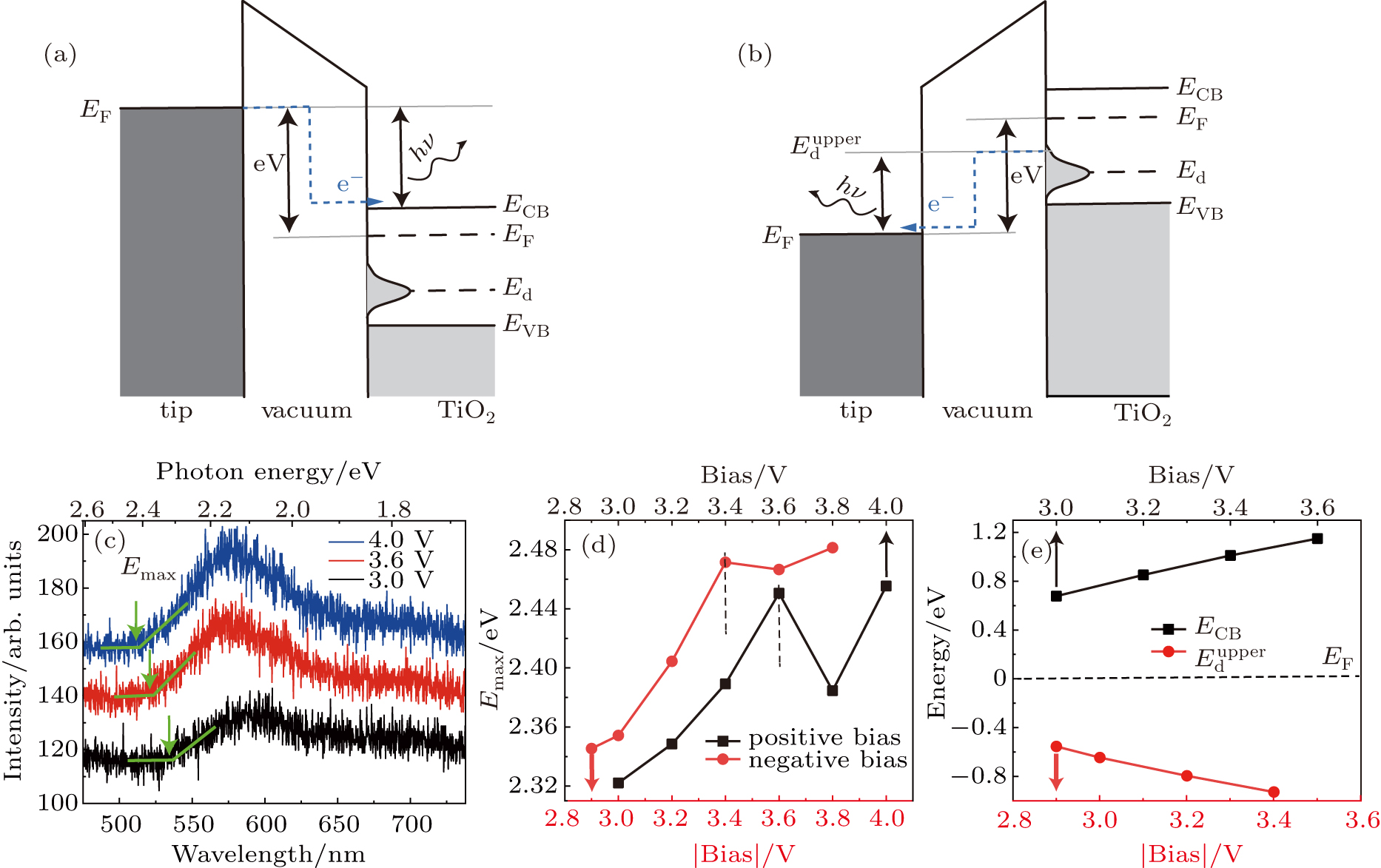Image charge effect on the light emission of rutile TiO2(110) induced by a scanning tunneling microscope
Project supported by the National Key R&D Program of China (Grant Nos. 2016YFA0300901 and 2017YFA0205003), the National Natural Science Foundation of China (Grant Nos. 11634001 and 21725302), and the Key Research Program of the Chinese Academy of Sciences (Grant No. XDPB08-1).
(color online) (a), (b) Energy diagrams illustrating the mechanism for light emission of TiO2(110) sample at positive and negative biases, respectively. The conduction band minimum (
